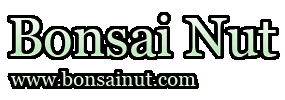Attila Soos
Omono
I was really glad to finally be able to attend a whole-day seminar hosted by Peter Adams at the convention. He is a great speaker, passionate and opinionated (I mean this as a compliment), and entertaining. Overall, spending time with Peter is an interesting and inspiring experience. I came home with lots of new ideas and knowledge, worth many times over the admission fee.
The reason why I post this is mainly because of one thing that he said. This instantly attracted my interest: he recommends that a large portion of the growing medium should be organic. This is contrary to many who believe that a purely inorganic medium is just fine. Whe I asked him in front of the whole class to comment on this apparent contradiction (inorganic school of thought vs. the use of organic matter), he thought for a few seconds and said:
" How long are people using the 100% inorganic approach....15 - 20 years may be? Well, in England, we are successfully using organic medium for 300 years. And the plants growing in this medium are as healthy as they can possibly be."
He loves sphagnum moss, because it holds its structure practically forever, and has some anti-bacterial properties (unlike akadama, which can quicly break down into mud when exposed to the freezing-thawing cycle), coarse peat moss, composted pine litter, leaf mold, and shredded bracken fern. The last one is apparently a new discovery in the world of growing media (the fern grows in the Pacific North West), that has some intriguing advantages when used as growing medium. In addition to good drainage and moisture retention, these also contain useful micro-elements.
In certain cases I use purely inorganic medium, but I often use organic as well, so I don't have strong views on either side.
I don't intend this to be a debate between the two prevailing schools of thought, after all, plants can be grown in almost anything, if one pays attention. But I find his approach refreshing.
By the way, Peter lives and works in the Pacific North West (Oregon), and he absolutely hates akadama and Japanese terminology .
.
The reason why I post this is mainly because of one thing that he said. This instantly attracted my interest: he recommends that a large portion of the growing medium should be organic. This is contrary to many who believe that a purely inorganic medium is just fine. Whe I asked him in front of the whole class to comment on this apparent contradiction (inorganic school of thought vs. the use of organic matter), he thought for a few seconds and said:
" How long are people using the 100% inorganic approach....15 - 20 years may be? Well, in England, we are successfully using organic medium for 300 years. And the plants growing in this medium are as healthy as they can possibly be."
He loves sphagnum moss, because it holds its structure practically forever, and has some anti-bacterial properties (unlike akadama, which can quicly break down into mud when exposed to the freezing-thawing cycle), coarse peat moss, composted pine litter, leaf mold, and shredded bracken fern. The last one is apparently a new discovery in the world of growing media (the fern grows in the Pacific North West), that has some intriguing advantages when used as growing medium. In addition to good drainage and moisture retention, these also contain useful micro-elements.
In certain cases I use purely inorganic medium, but I often use organic as well, so I don't have strong views on either side.
I don't intend this to be a debate between the two prevailing schools of thought, after all, plants can be grown in almost anything, if one pays attention. But I find his approach refreshing.
By the way, Peter lives and works in the Pacific North West (Oregon), and he absolutely hates akadama and Japanese terminology
Last edited:

